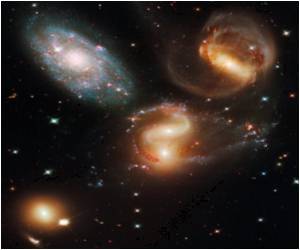Astrophysicist Stephen Hawking conceives that if humanity is to survive we will have up sticks and colonise space. However uncertainty lies if human body is ready for the challenge?

Their research, published on Wednesday 30 November 2011 in Interface, a journal of The Royal Society, has shown that in space the C. elegans develops from egg to adulthood and produces progeny just as it does on earth. This makes it an ideal and cost-effective experimental system to investigate the effects of long duration and distance space exploration.
In December 2006 a team of scientists led by Dr Nathaniel Szewczyk from the Division of Clinical Physiology in the School of Graduate Entry Medicine blasted 4,000 C. elegans into space onboard the Space Shuttle Discovery. The researchers were able to successfully monitor the effect of low Earth orbit (LEO) on 12 generations of C. elegans during the first three months of their six month voyage onboard the International Space Station. These are the first observations of C. elegans behaviour in LEO.
Dr Szewczyk said: "A fair number of scientists agree that we could colonise other planets. While this sounds like science fiction it is a fact that if mankind wants to avoid the natural order of extinction then we need to find ways to live on other planets. Thankfully most of the world's space agencies are committed to this common goal.
"While it may seem surprising, many of the biological changes that happen during spaceflight affect astronauts and worms and in the same way. We have been able to show that worms can grow and reproduce in space for long enough to reach another planet and that we can remotely monitor their health. As a result C. elegans is a cost effective option for discovering and studying the biological effects of deep space missions. Ultimately, we are now in a position to be able to remotely grow and study an animal on another planet."
Many experts believe the ultimate survival of humanity is dependent upon colonisation of other planetary bodies. But we face key challenges associated with long term space exploration. Radiation exposure and musculoskeletal deterioration are thought to be two of the key obstacles to successful habitation beyond LEO.
Advertisement
C. elegans was the first multi-cellular organism to have its genetic structure completely mapped and many of its 20,000 genes perform the same functions as those in humans. Two thousand of these genes have a role in promoting muscle function and 50 to 60 per cent of these have very obvious human counterparts.
Dr Szewczyk said: "Worms allow us to detect changes in growth, development, reproduction and behaviour in response to environmental conditions such as toxins or in response to deep space missions. Given the high failure rate of Mars missions use of worms allows us to safely and relatively cheaply test spacecraft systems prior to manned missions."
The 2006 space mission, which led to this latest research, was followed up with a fourth mission in November 2009. Some of the results of the 2009 mission were published earlier this year in the journal PLoS ONE
Together these two missions have established that the team are not only in a position to send worms to other planets but also to experiment on them on the way there and/or once there. More results, including a mechanism by which muscles can repair themselves are due to be published shortly.
The origins of Dr Szewczyk's worms can be traced back to a rubbish dump in Bristol. C. elegans often feed on bacteria that develop on decaying vegetable matter.
Source-Eurekalert









